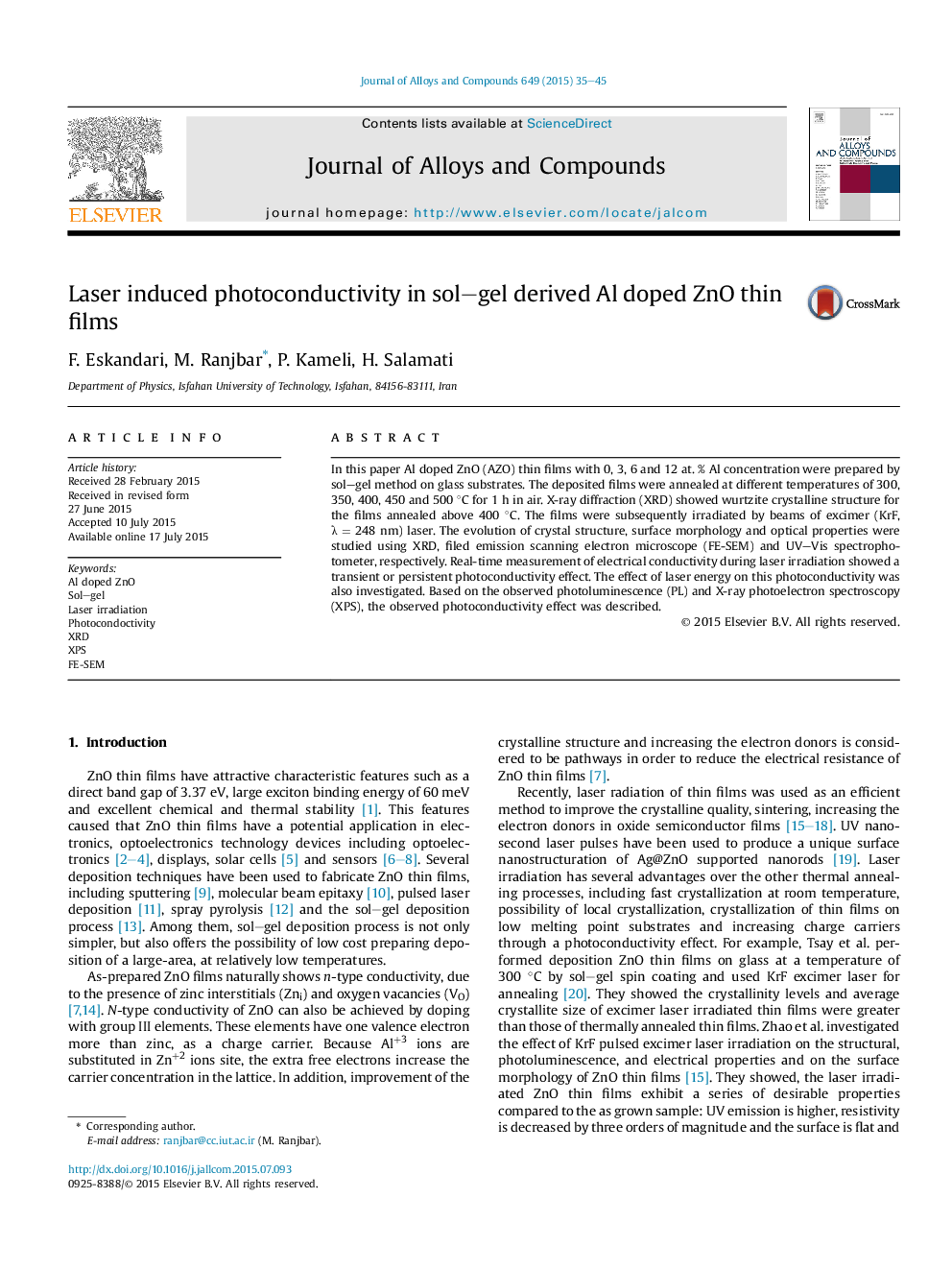| Article ID | Journal | Published Year | Pages | File Type |
|---|---|---|---|---|
| 1608522 | Journal of Alloys and Compounds | 2015 | 11 Pages |
•AZO (0–12 at. % Al) films were prepared by sol–gel method and annealed at different temperatures.•Excimer laser (λ = 248 nm) irradiation leads to improvement of crystalline structure.•Average optical transmission doesn't change and optical gap decreases by irradiation.•Photoconductivity was investigated by real-time measurement of electrical resistance.•Sample of 6% Al annealed at 450–500 °C showed the best photoconductivity effect.
In this paper Al doped ZnO (AZO) thin films with 0, 3, 6 and 12 at. % Al concentration were prepared by sol–gel method on glass substrates. The deposited films were annealed at different temperatures of 300, 350, 400, 450 and 500 °C for 1 h in air. X-ray diffraction (XRD) showed wurtzite crystalline structure for the films annealed above 400 °C. The films were subsequently irradiated by beams of excimer (KrF, λ = 248 nm) laser. The evolution of crystal structure, surface morphology and optical properties were studied using XRD, filed emission scanning electron microscope (FE-SEM) and UV–Vis spectrophotometer, respectively. Real-time measurement of electrical conductivity during laser irradiation showed a transient or persistent photoconductivity effect. The effect of laser energy on this photoconductivity was also investigated. Based on the observed photoluminescence (PL) and X-ray photoelectron spectroscopy (XPS), the observed photoconductivity effect was described.
Graphical abstractFigure optionsDownload full-size imageDownload as PowerPoint slide
